Small Town Research Project
Comfort, Texas
An Historical Tour
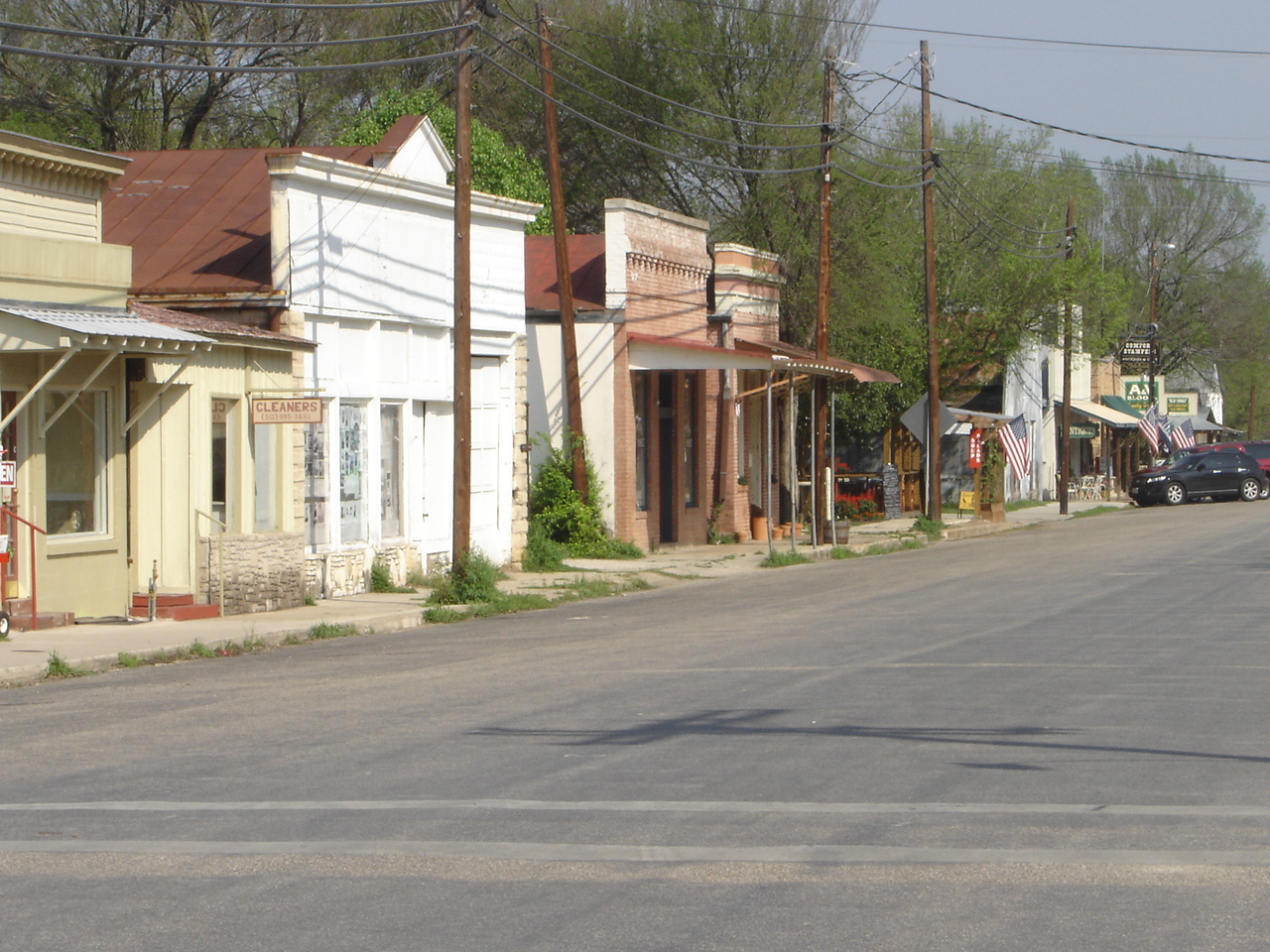
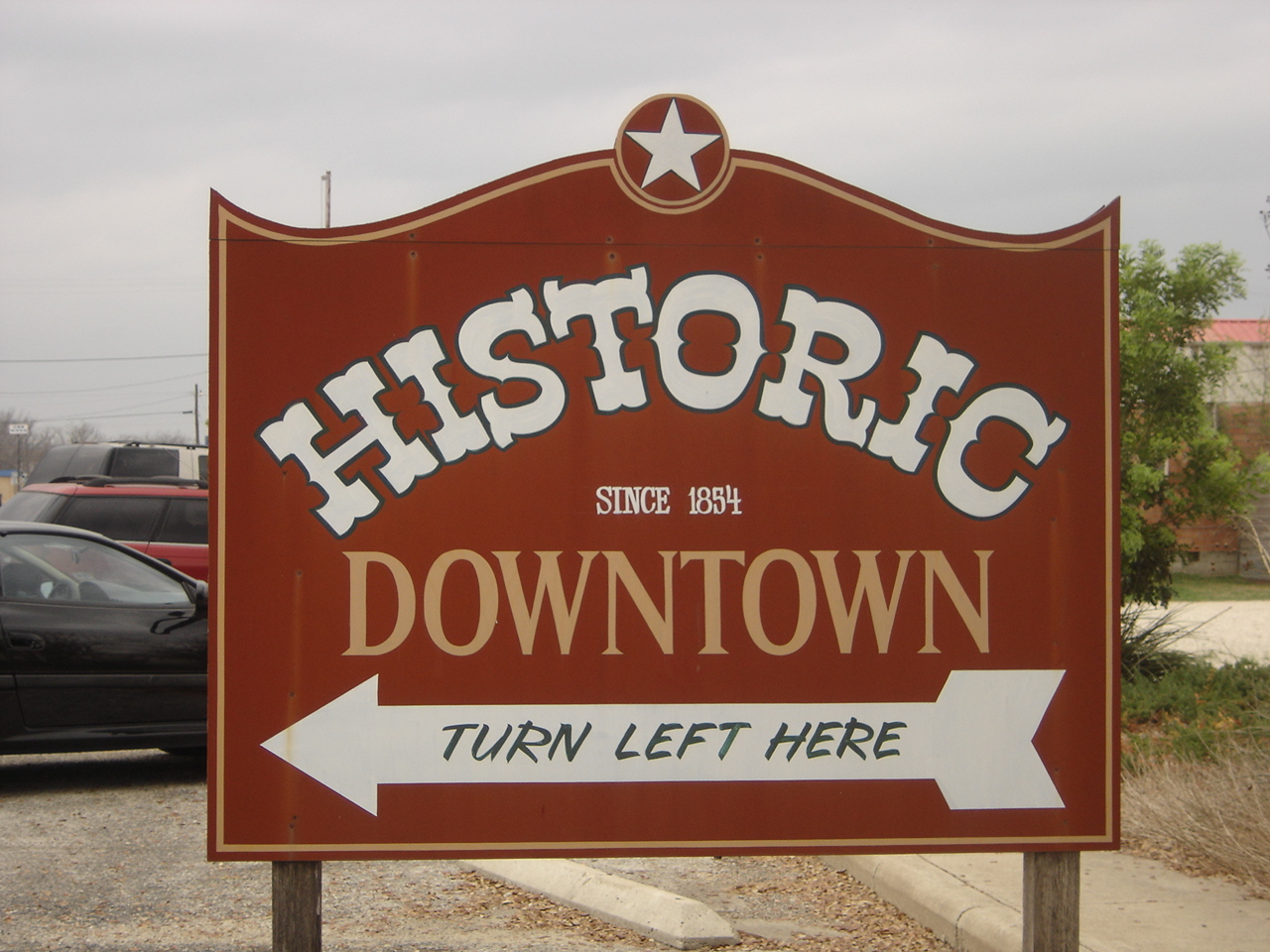
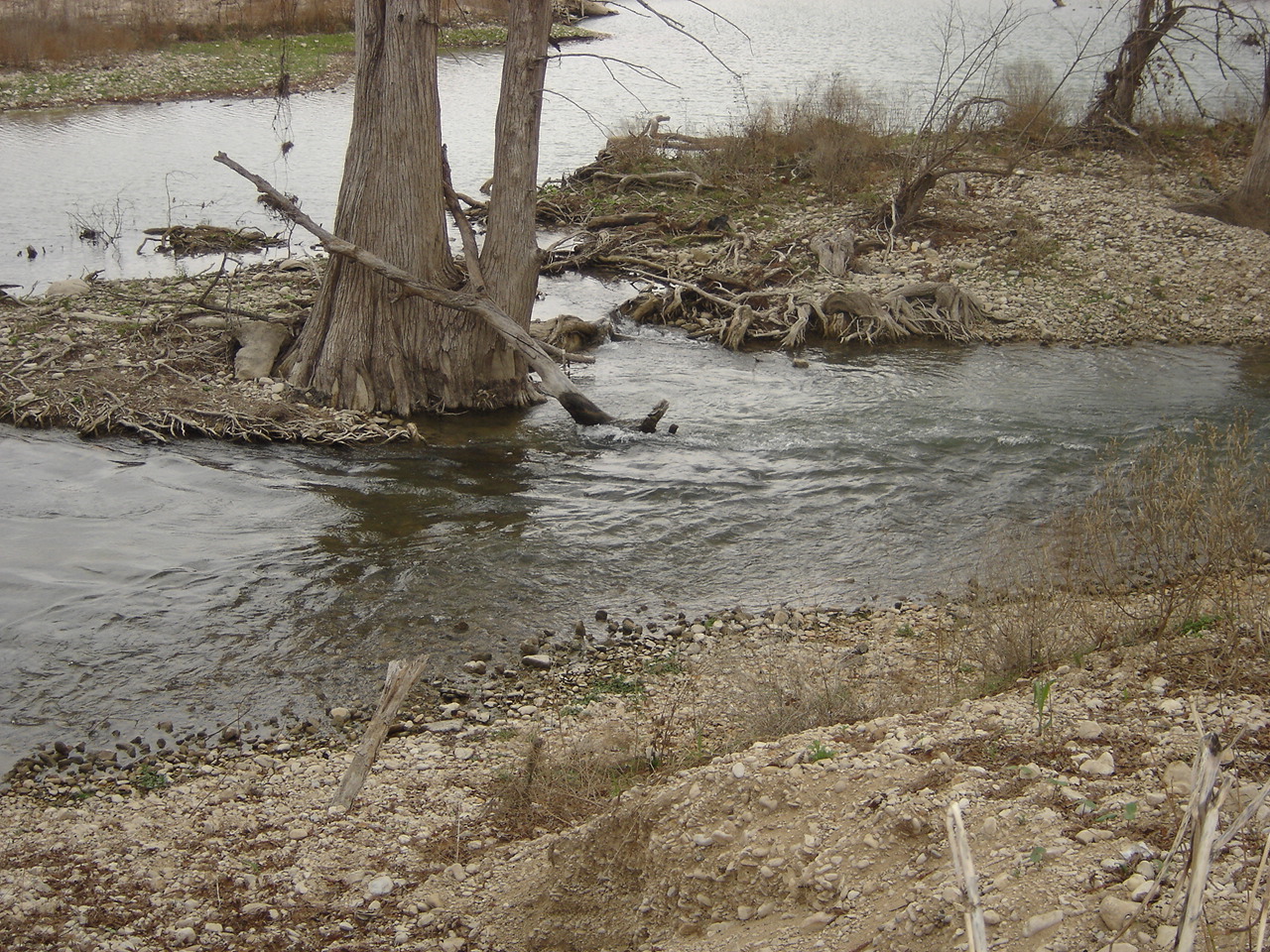
Tucked away in Kendall County deep in the elegant South Texas Hill Country,
lies the charming little town of Comfort Texas. Only a 40 minute drive northwest of
San Antonio, this loveable little
town overflows with beauty, self-esteem, and a rich history.
Barely visible from Interstate 10, it's easy to see how some folks could miss it.
A speedy driver could pass right on by without
even realizing it was there. But for the Texas residents who have experienced its
many charms, the town remains a pleasant little secret.
For three days in September 2004, Comfort was buzzing with parties, parades, and pageants.
The festivities were all a part of the town's 150 year Jubilee celebration.
The official Jubilee theme was dubbed, "Pride in the Past, Faith in the Future."
An appropriate moniker for a town that was literally built on German pride,
and plenty of faith as well; faith in their “Freethinker” devotion.
Devotion that hammered out a society that would stand up to the tests of pioneer life,
Civil War, and disastrous floods.
The Early years
Located at the junction of the Guadalupe River and Cypress Creek, Comfort was founded
in 1854 by a man named
Ernst Hermann Altgelt. A German immigrant who migrated to America to escape the wars
and religious persecution Germany had become engulfed in. Sponsored by employer John Vles,
Altgelt set out for the Texas hill country to survey land for a town. Upon reaching a
breathtaking area where the Guadalupe River and Cypress Creek converged, Altgelt saw no need
in going any further. He and his surveying party immediately set up camp on the
banks of Cypress Creek. After a short time, some of the settlers began to refer to the area as
"Gemultlichkeit.
" A German word that signifies feelings like social acceptance,
a notion of belonging, friendliness, coziness, and comfort. Perhaps realizing that
the word might be awkward and unmanageable for future generations, the name was
simplified to Comfort; a name that still accurately reflects the peaceable and
easy-going demeanor of the community today.
(*Comfort Heritage, Our Progress. pages 2 & 3)
A Statue of Ernst Altgetlt in Comfort Park, and the purported site of the
original "Camp Comfort."
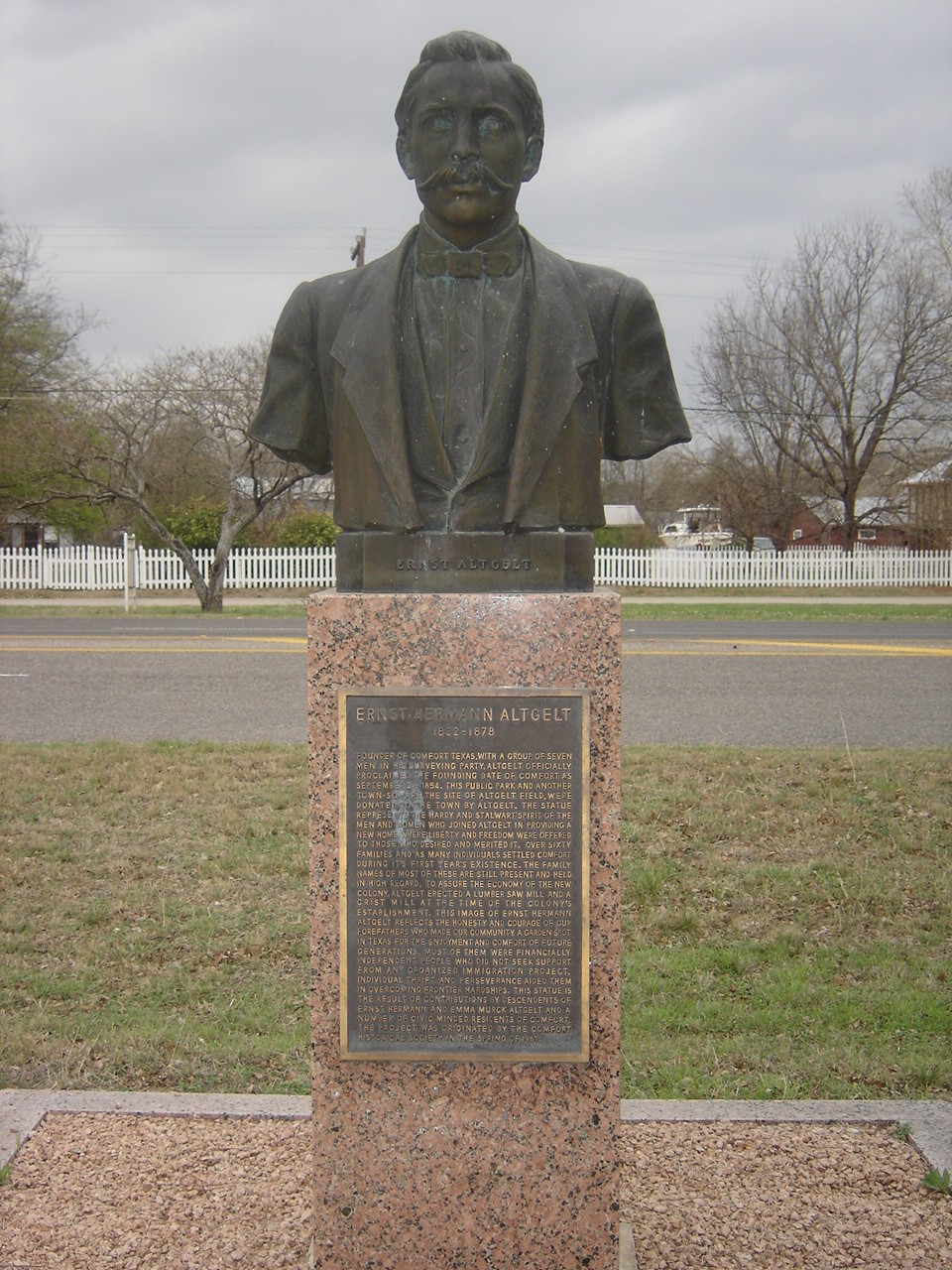
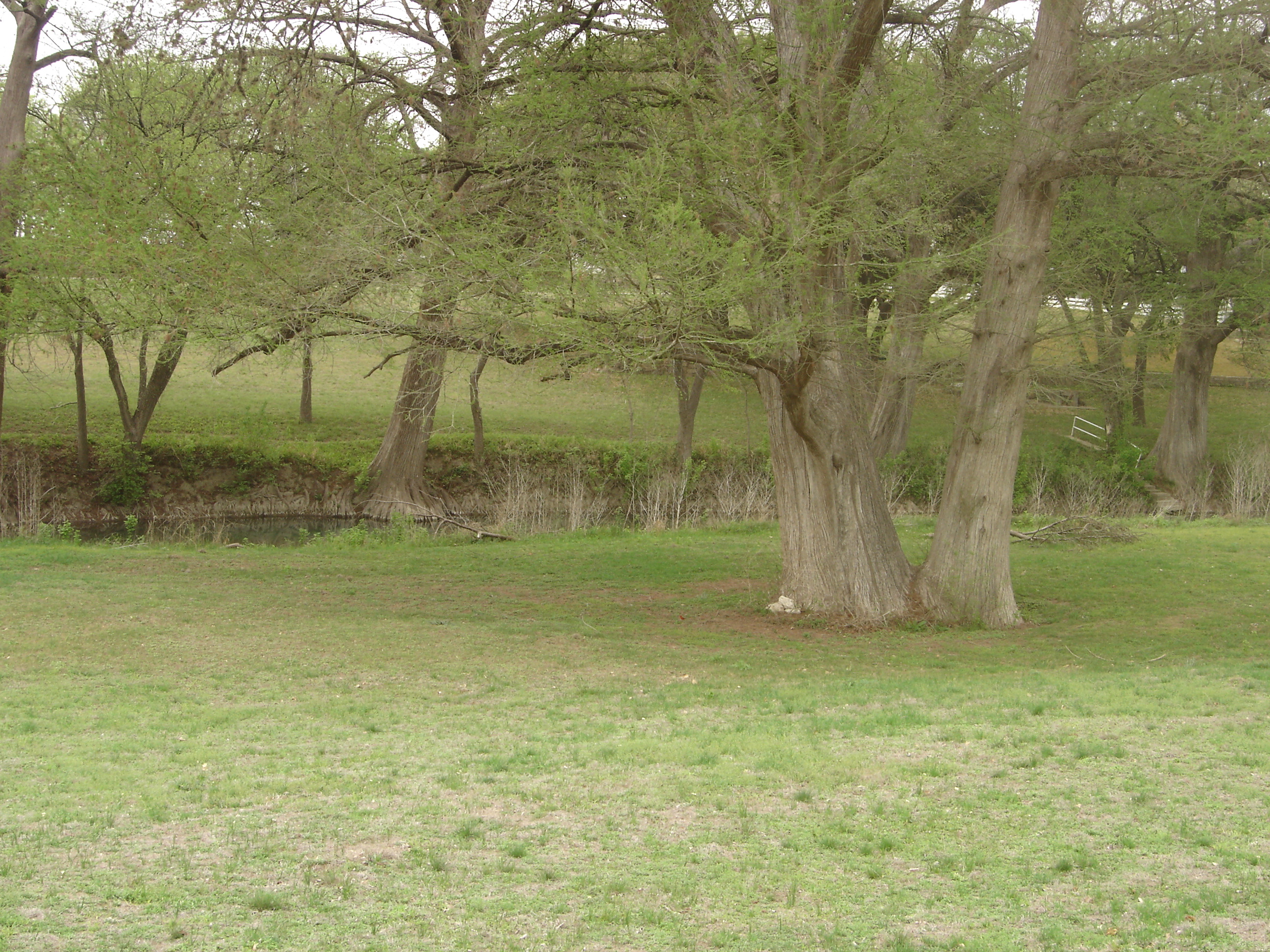
Soon after Camp Comfort was established, other German immigrants from
surrounding Hill Country towns began moving to the area as well. Above all motivators, it would
appear that the most common reason for these Germans coming together in Comfort, was their
"Freethinker"
ideals towards life, religion, and politics. Even though some people questioned the motives
of the Freethinkers, it was apparent from the beginning that most just wanted a better
way of life amongst their own people.
Despite the tolerant and tranquil feelings the area originally
generated, “Comfort” is far from what the settlers experienced after the novelty
had worn off. Life for the pioneers was no easier than it had been for others who had
tried to tame the American land before them. Most of the initial settlers were the
cultured intellectual types; scholarly men who weren’t accustomed to working with
their hands or raising crops. Although the ground was fertile, learning to farm and
survive off the land was initially a struggle. The area was also occupied by hostile
Comanches and Apaches;
Indians who believed that no land should ever be “owned.” Sometimes these
Indians would make off with what little food they had. Although they were often
fearful and wary of the Indians, necessity soon motivated the settlers to establish a
trade with them. An established trade with the Indians, as well as an abundance of white-tailed deer,
made pioneer life more tolerable
The first industry to establish itself in Comfort was that of cypress shingles.
The banks of the Guadalupe River and Cypress Creek were teeming with large cypress trees.
This natural resource was put to use when constructing the first homes built in the town, and
soon provided a lumber and shingle industry that opened up jobs and created cash flow. The
shingles were taken to San Antonio by wagons pulled with oxen. Depending on the weather,
these trips would take up to two weeks to complete. Even though the sawmills were often
washed away by floods, it did little to break the spirit of Comfort. It seemed as
though the German immigrants had finally found the freedom and happiness they had left
their mother land for. By the early 1860’s their perseverance fueled by their freethinking
beliefs had established a flourishing and prosperous community. But that would soon change with
the Civil War.
(*Comfort Heritage, Our Progress. pages 2 & 3)
Cypress trees along the banks of the Guadalupe River
and Cypress Creek were instrumental in early success
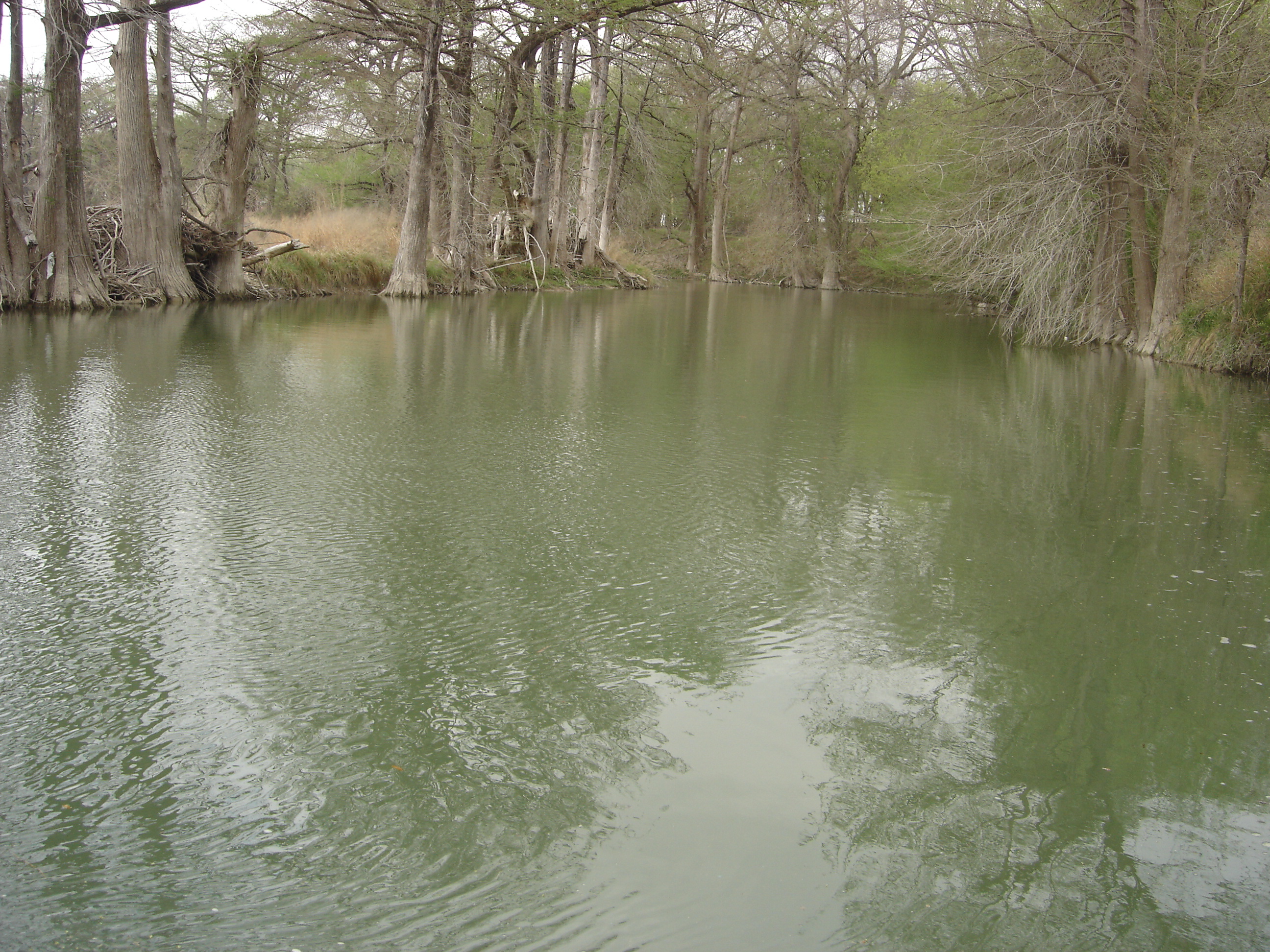
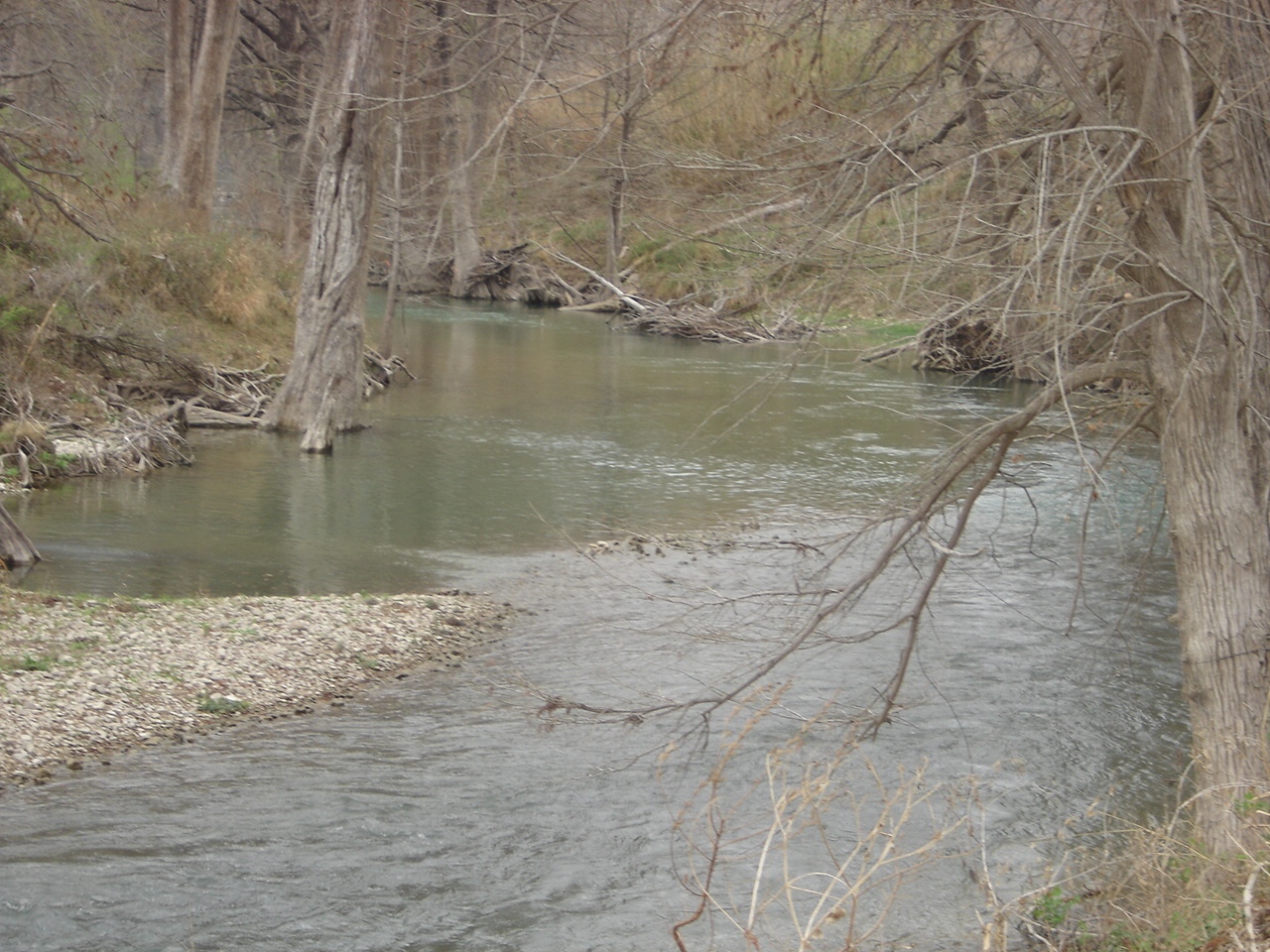
Comfort and the Civil War
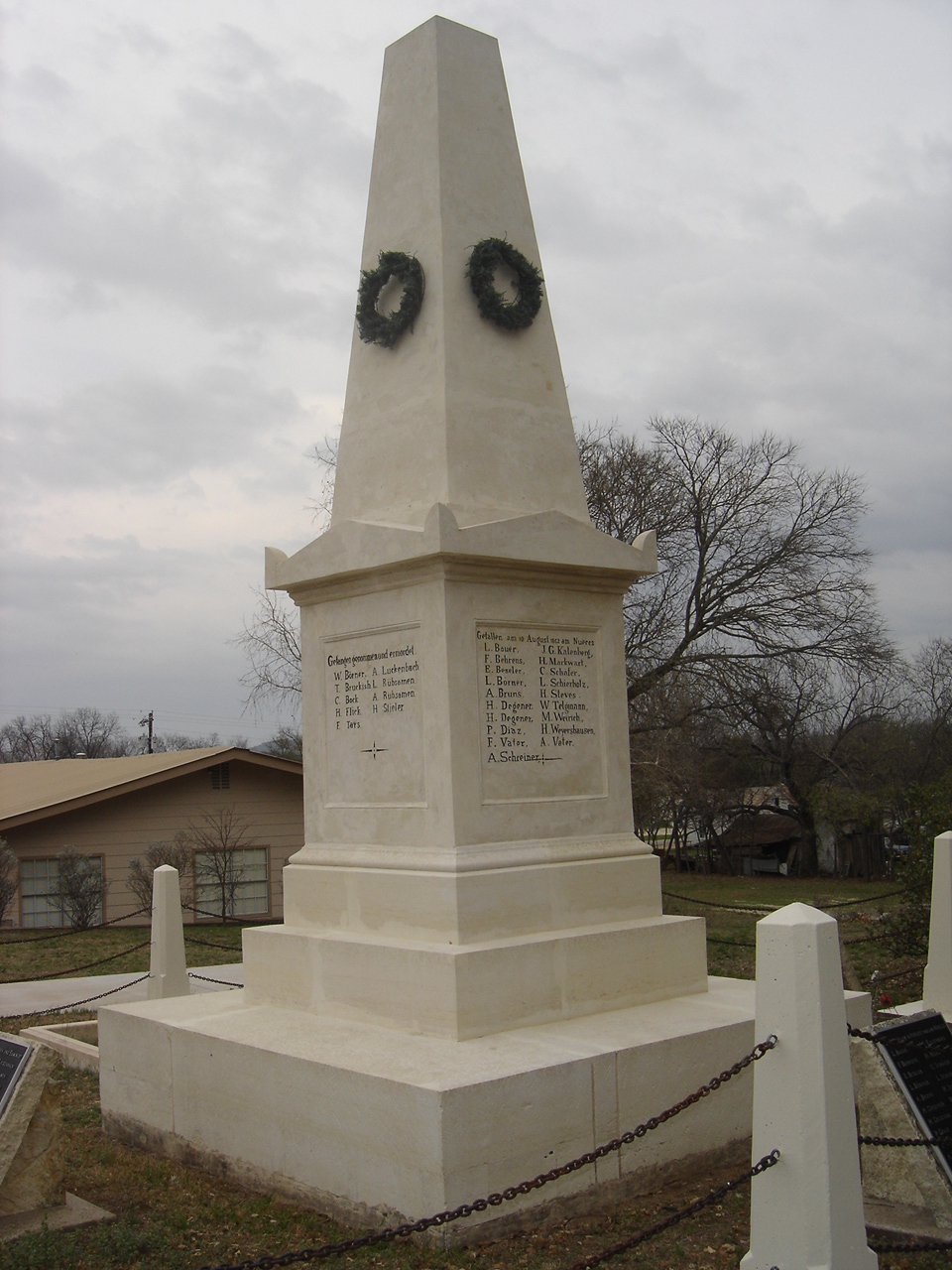
In 1861, the war between the states was set to begin. News reached Comfort that Texas had
seceded from the Union. Even though the people of Comfort didn’t own any slaves, they still
found themselves being forced to take up with the Confederacy. While some supported the
Confederacy, the majority of townspeople were dumbfounded at the idea of fighting against
the Union. They felt as though they owed their loyalty to the Nation that had bestowed on
them so much freedom and happiness. Nevertheless,
the new Confederate government in Texas decreed
that an individual “oath of allegiance” to the Confederacy be signed by every male between
the ages of 18 and 35. Since signing an allegiance meant volunteering
and serving for the Confederate Army, most of the young men in Comfort, following
the lead of their
Governor Sam Houston, stood against
it and refused to sign. It wasn’t long before Confederate forces began to
ruthlessly torment those who wouldn’t
sign the oath. People were mercilessly attacked; farmhouses were burned to the ground. It
is said that up to 150 men and boys in surrounding areas were victims of Confederate lynchings.
For the German immigrants of Comfort, their worst nightmares had materialized.
The assertive style of government and persecution they had fled in Germany, found
them again in Texas. After over a year of torture and harassment, a large group of the
nonconformists decided to set out for neighboring Mexico in hopes of riding out the war
there. The group had comprised of many people in Comfort, as well as the surrounding
communities within a 30 mile radius. It was a sad day in the history of the German Hill
Country community. But the saddest day was yet to come.
(*Comfort Heritage, Our Progress. pages 2 & 3)
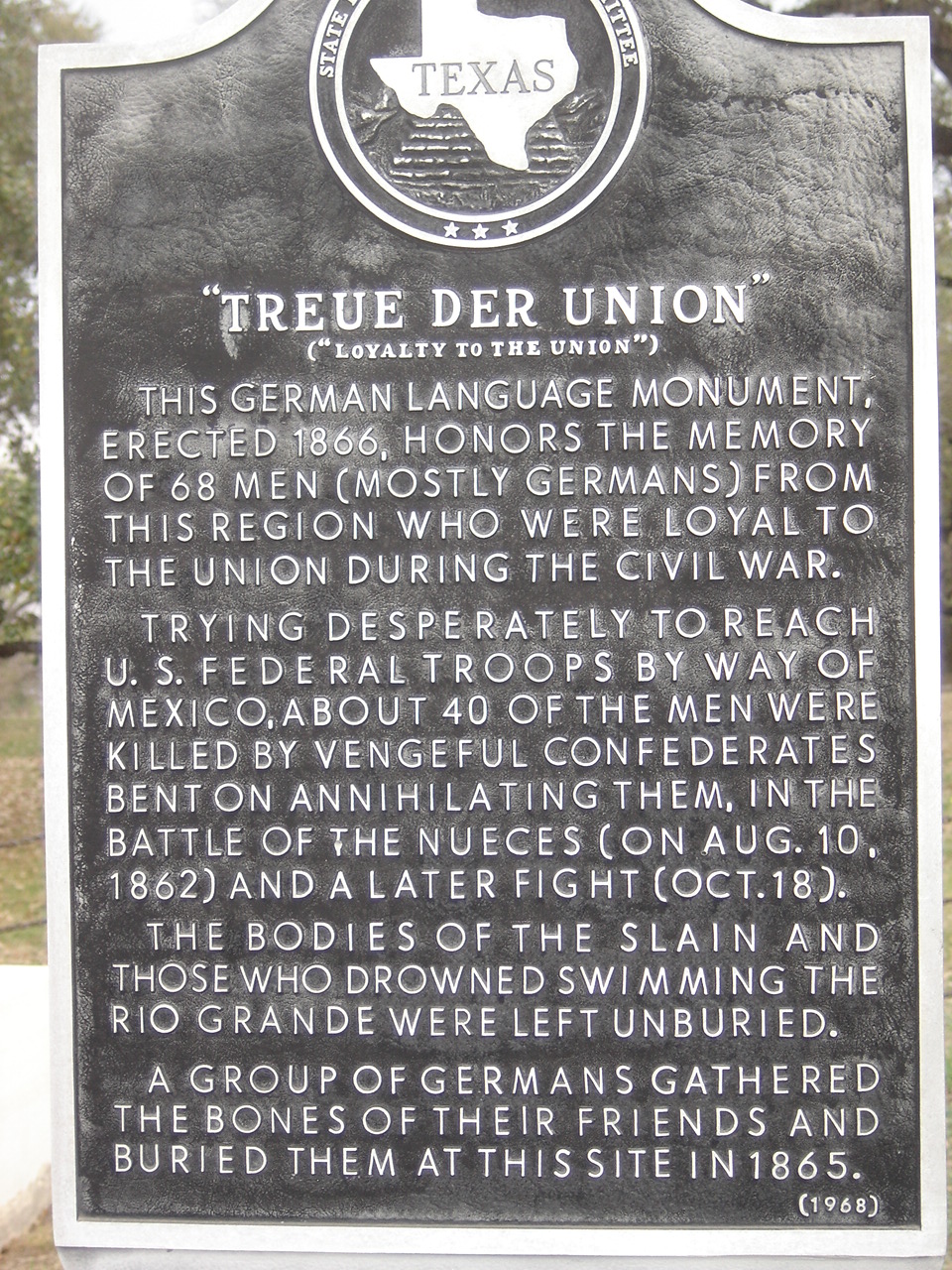
As the dissidents made their way south for the border, they were
chased and overwhelmed
by Confederate forces. Conflicting reports as to how many died in the ensuing battle
are debated still even today. What is known is that at least 19 of the rebels
were killed in the initial Confederate attack at the Nueces River. Seventeen more were
killed later. What is debated is how the latter 17 died.
While some believe that they were killed in a later battle, others argue that they were taken
prisoner and massacred in cold blood. By all accounts, the Germans gave a good showing of
themselves in the battle despite being heavily outnumbered. Even though much of the group had
been killed, there were some who managed to escape to Mexico, and still others who escaped to
join up with Union forces.
At the conclusion of the war in 1865, family members of the late rebels journeyed to the site
of the battle to recover the remains of the fallen, and returned them to Comfort for burial.
The Confederate army had barred them from the area in the years prior. Upon returning home,
they were finally given a proper burial. On August 10, 1866 a monument was dedicated on the
fourth anniversary of the battle. The Treue Der Union
(True to the Union) Monument was
erected in tribute of the 36 heroes who gave their lives
The Battle of Nueces. It is now
listed in the National Register of Historic Places, and is highly revered by Comfort
residents even today.
(*Comfort Heritage, Our Progress. pages 3 & 4)
Reconstruction and the Railroad
Much like the rest of the nation post Civil War, Comfort turned its attention on
reconstruction. And it didn’t take long for the town to become a thriving community again.
Rock houses soon stood in place of the old log cabins. The Comfort School Association was
formed, and a second school was built. The Ed Steves
Lumber Company soon became part of the community.
Agriculture (especially cotton) became a large industry. Thomas Ingenhuett even started a
brewery in 1872. The first cotton gin was established by Ernst Flach in 1875. For the next
12 years, stores, a hotel, saw mills, a stable, and even an opera house sprang up.
In 1887, the
railroad made its way to Comfort, and with it came the Comfort Depot
Station. The railroad had aspirations of extending all the way to San Angelo, but never
made it past Kerrville. The railroad not only provided easier ways to get lumber and
shingles to large markets, but it also brought more sophisticated goods for local merchants.
The train also brought with it people who were looking to escape city life for a while. As a
result more hotels were built. Traveling businessmen and tourists often kept the hotels lively.
In February of 1971, the railroad decided to discontinue the line, but there’s no doubting
that it contributed greatly to the success of Comfort for many decades.
(*Comfort Heritage, Our Progress. pages 4,5 & 6)
The original Comfort station next to an old railroad caboose
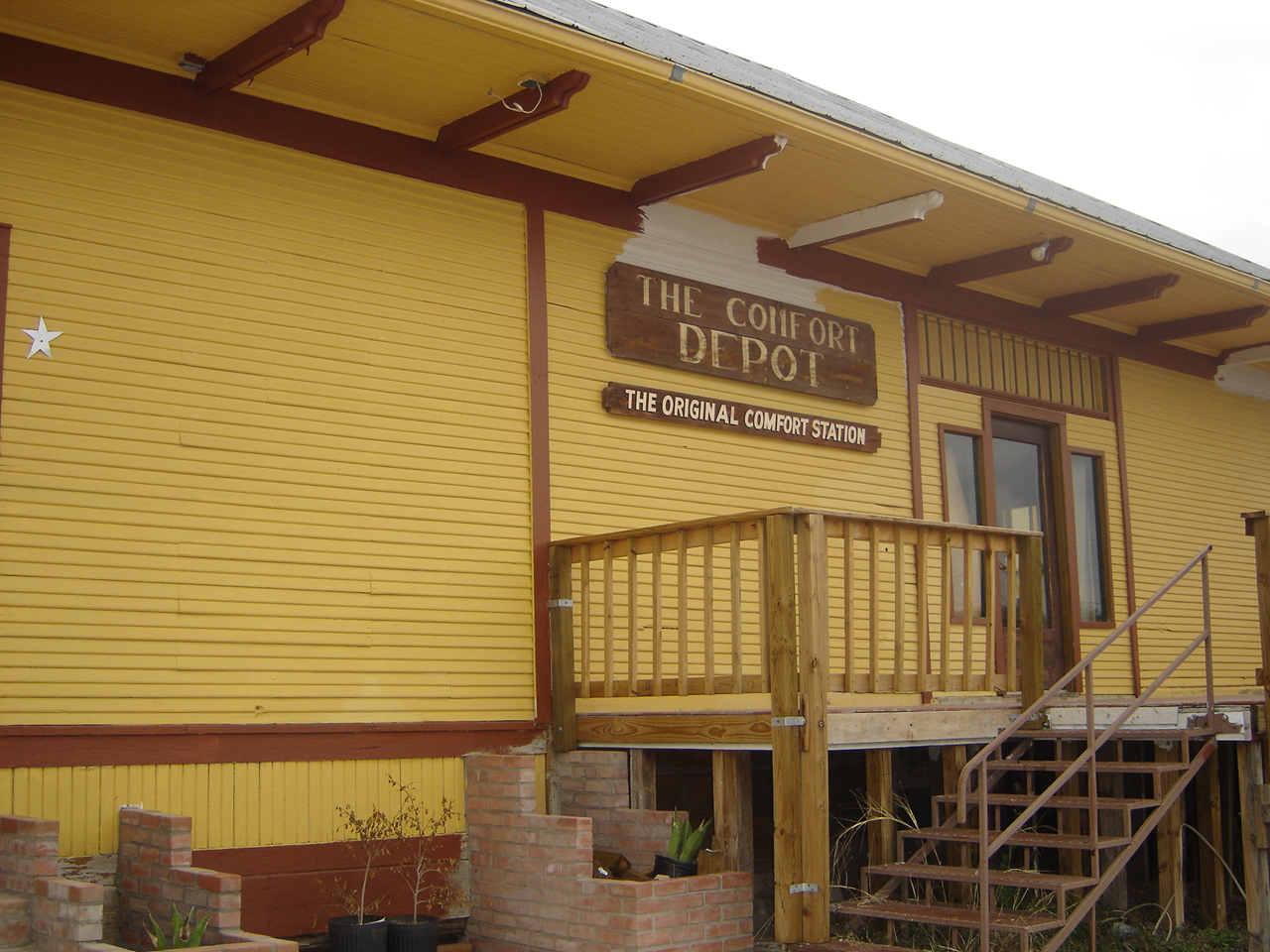
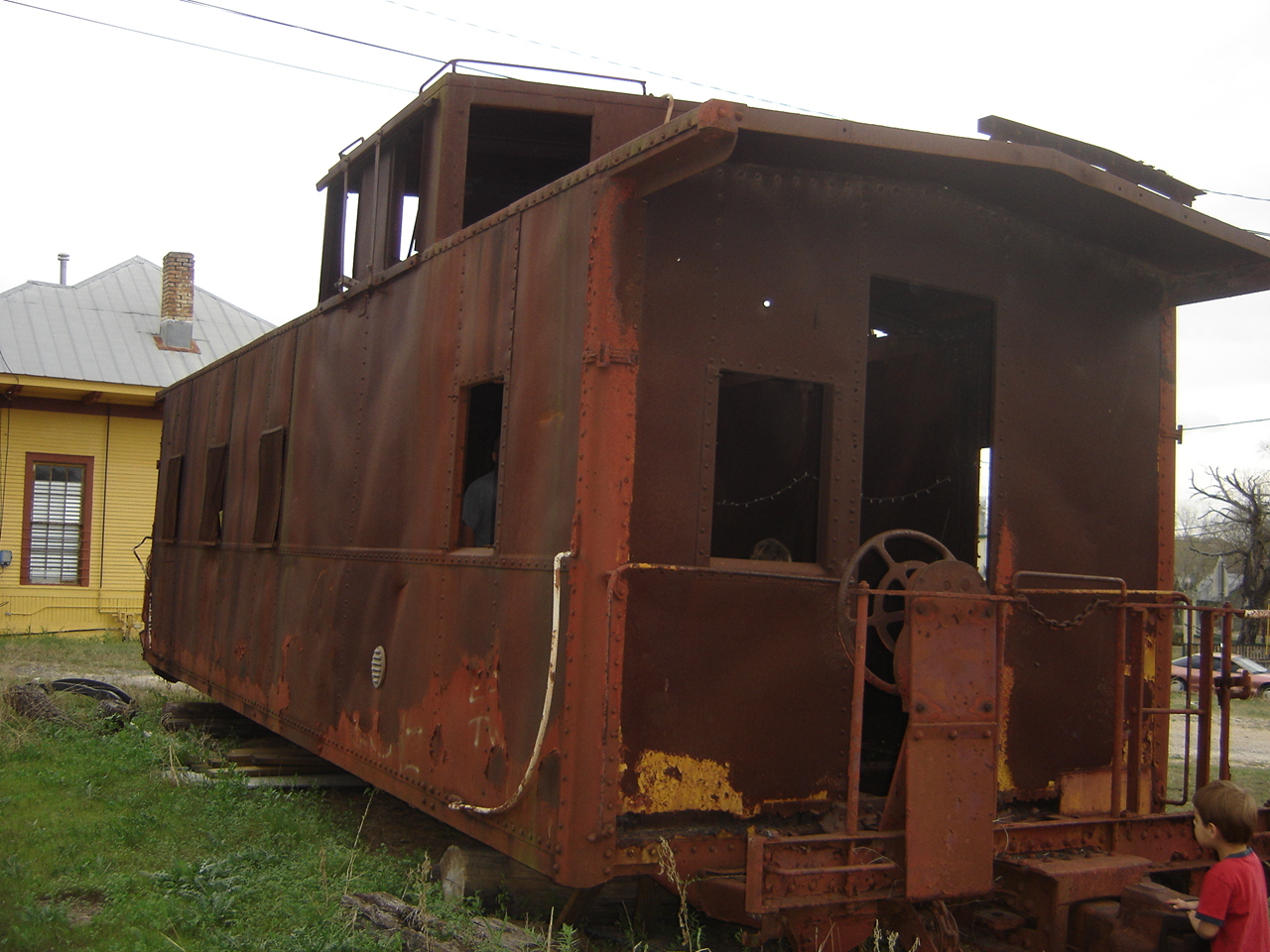
Turn of the Centry and Prosperous times
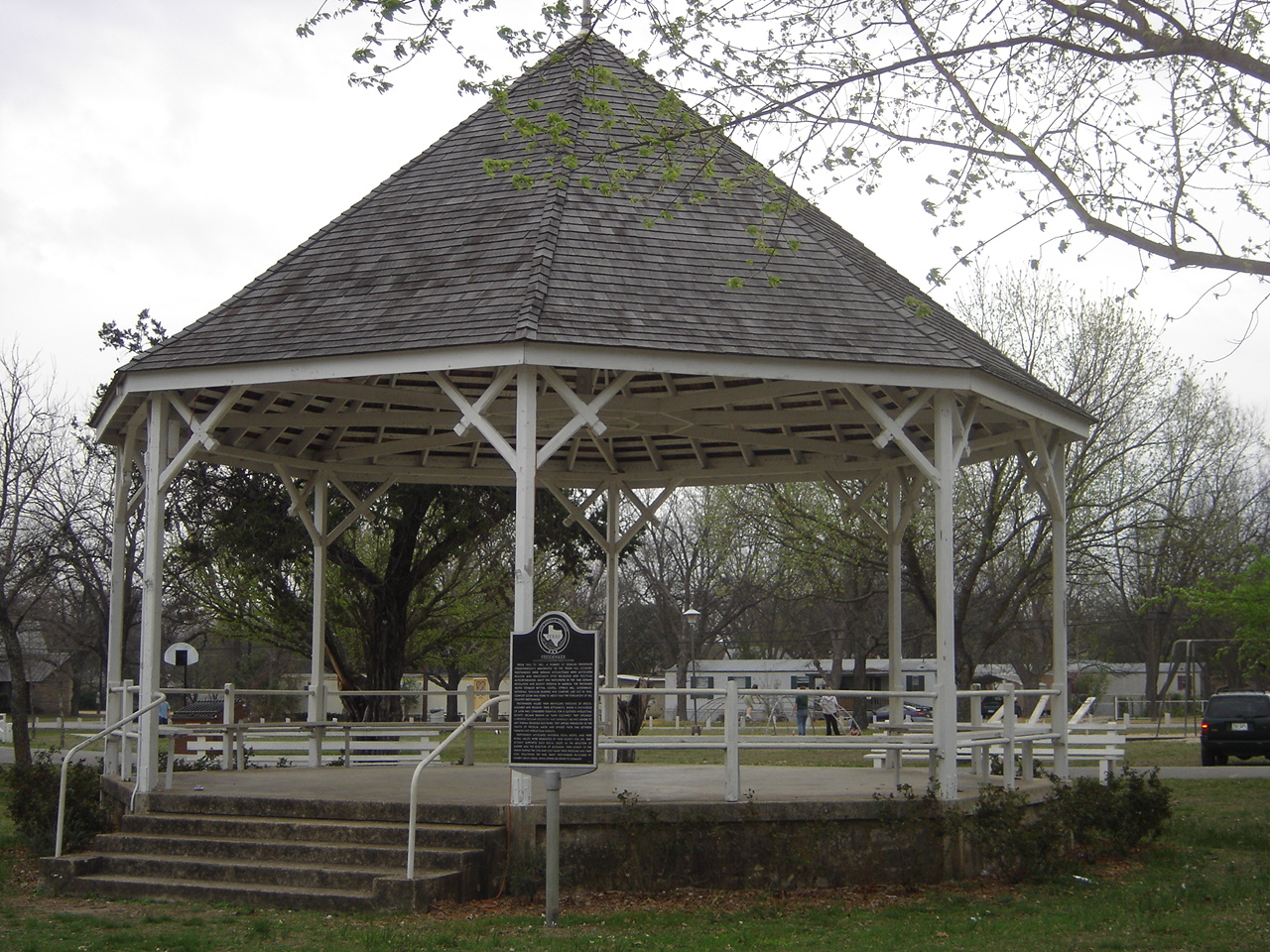 The turn of the century time was definitely a golden age for Comfort. The first
community church was built in 1892. Social gatherings like parades, dances, picnics and other
festive events became a common occurrence. Men’s clubs, women’s meetings, a men’s chorus, a
literary social club, and several other social groups were the inspiration of an era of great
enthusiasm and community pride. Comfort’s first newspaper, “The Comfort Times” was published,
and the Comfort Park was built. The park is still the central gathering place of many social
celebrations even today. In 1904 Comfort celebrated its 50th anniversary at the park. A
parade was also part of the celebration. Comfort was truly a town beaming with pride and
merriment.
The turn of the century time was definitely a golden age for Comfort. The first
community church was built in 1892. Social gatherings like parades, dances, picnics and other
festive events became a common occurrence. Men’s clubs, women’s meetings, a men’s chorus, a
literary social club, and several other social groups were the inspiration of an era of great
enthusiasm and community pride. Comfort’s first newspaper, “The Comfort Times” was published,
and the Comfort Park was built. The park is still the central gathering place of many social
celebrations even today. In 1904 Comfort celebrated its 50th anniversary at the park. A
parade was also part of the celebration. Comfort was truly a town beaming with pride and
merriment.
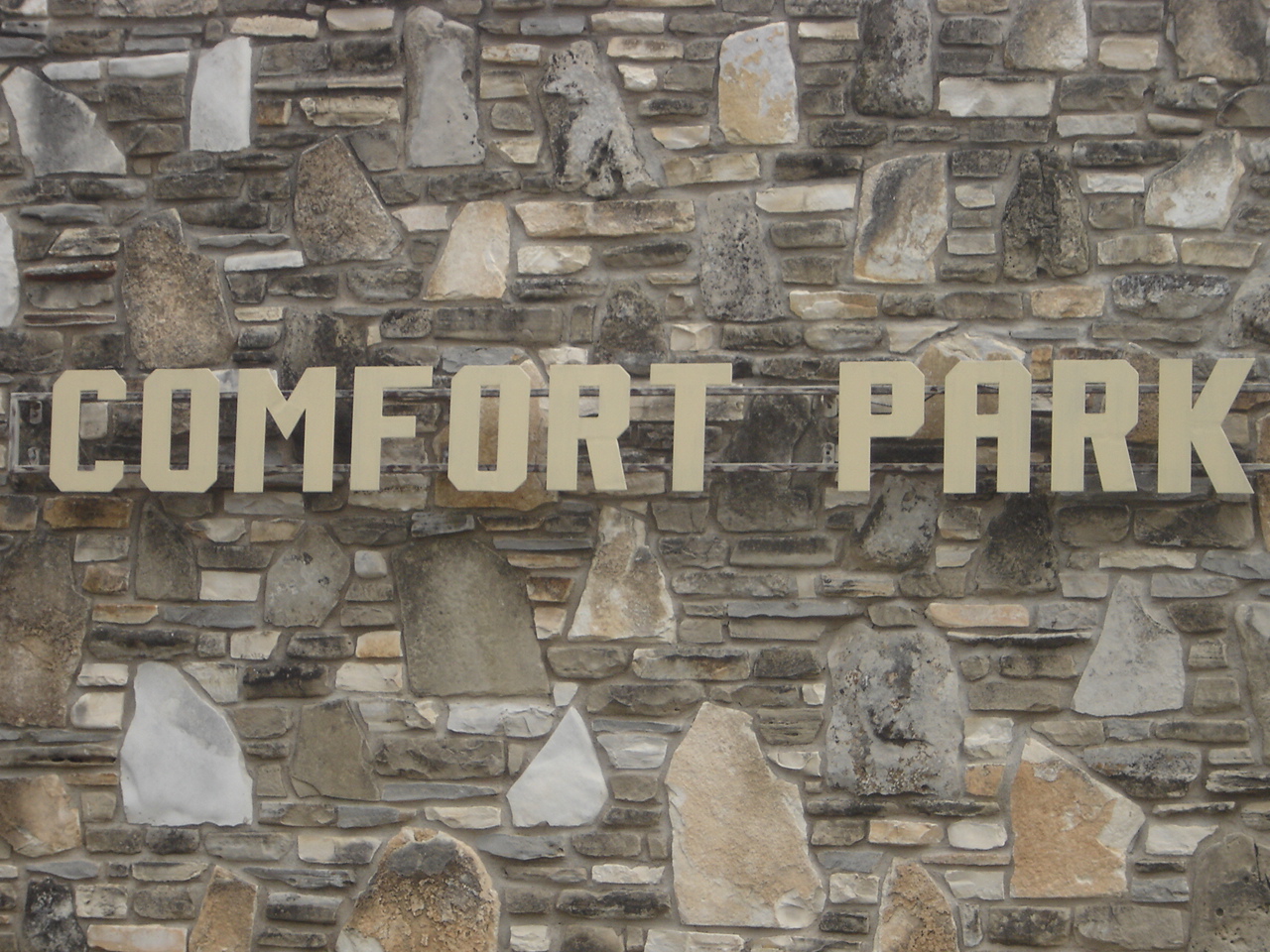 While this “golden age” for Comfort provided peace and public joy, it also brought a
time of great growth. By now, a large population of the town was Hispanic. New homes were
being built at a level never before seen. Local businesses flourished, The very first
automobile was believed to have made its way to Comfort around 1905. The town established
its Chamber of Commerce. The first mail route to Comfort was established in 1908; the
Comfort Volunteer Fire Department was formed in 1912.
During the time of World War I, some local men did go off to fight “the war to end
all wars,” but for the most part Comfort remained a town of great growth. In 1917,Hermann Sons Home for the Aged, which still operates today, was built. By the time 1923
rolled around, Comfort had added a second story to the school. Town streets were being
paved by 1927. Electric transmission lines had made their way to the area. And in 1929,
Comfort celebrated its 75th Anniversary with a parade and dances.
While this “golden age” for Comfort provided peace and public joy, it also brought a
time of great growth. By now, a large population of the town was Hispanic. New homes were
being built at a level never before seen. Local businesses flourished, The very first
automobile was believed to have made its way to Comfort around 1905. The town established
its Chamber of Commerce. The first mail route to Comfort was established in 1908; the
Comfort Volunteer Fire Department was formed in 1912.
During the time of World War I, some local men did go off to fight “the war to end
all wars,” but for the most part Comfort remained a town of great growth. In 1917,Hermann Sons Home for the Aged, which still operates today, was built. By the time 1923
rolled around, Comfort had added a second story to the school. Town streets were being
paved by 1927. Electric transmission lines had made their way to the area. And in 1929,
Comfort celebrated its 75th Anniversary with a parade and dances.
(*Comfort Heritage, Our Progress. pages 4,5 & 6)
(*The Comfort News)
1930-1960
The years between 1930 and 1940 started off with the construction of the Comfort
Community Hall. In 1932 Comfort suffered through yet another disastrous flood of the
Guadalupe River. As a result, the first steel bridge was constructed over the river in
1933 on U.S. Highway 87. Comfort would also see Highway 27 come through during
this time as well. With the new highways making their way to Comfort, newer, more
modern looking buildings began to spring up along these routes. In 1938, Comfort
saw the first Hispanic business started by the Castro family. Lidner Feed Mill, which still
remains a substantial part of the Comfort landscape, was also constructed.
(*The Comfort News)
Lidner feedmill
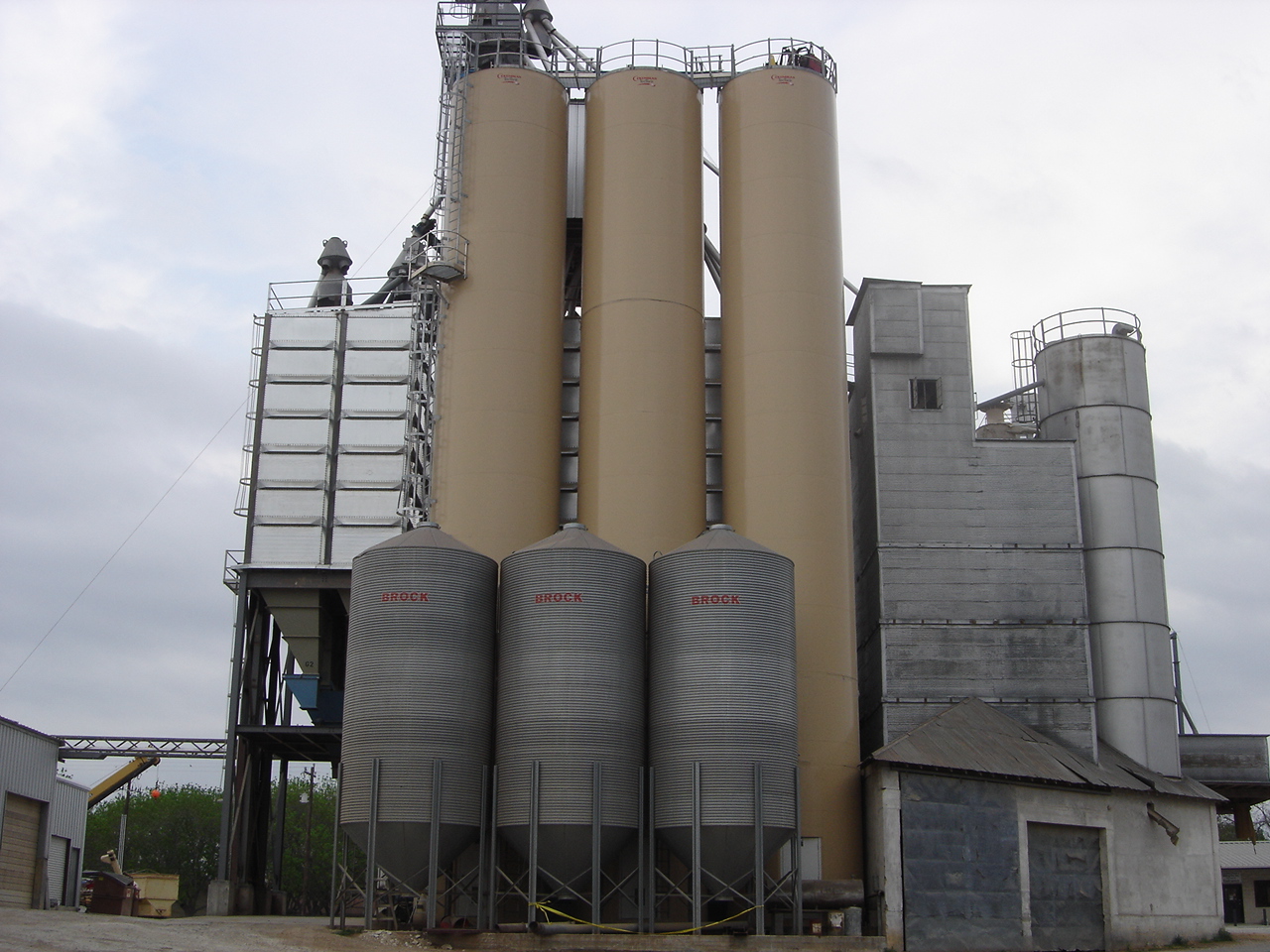
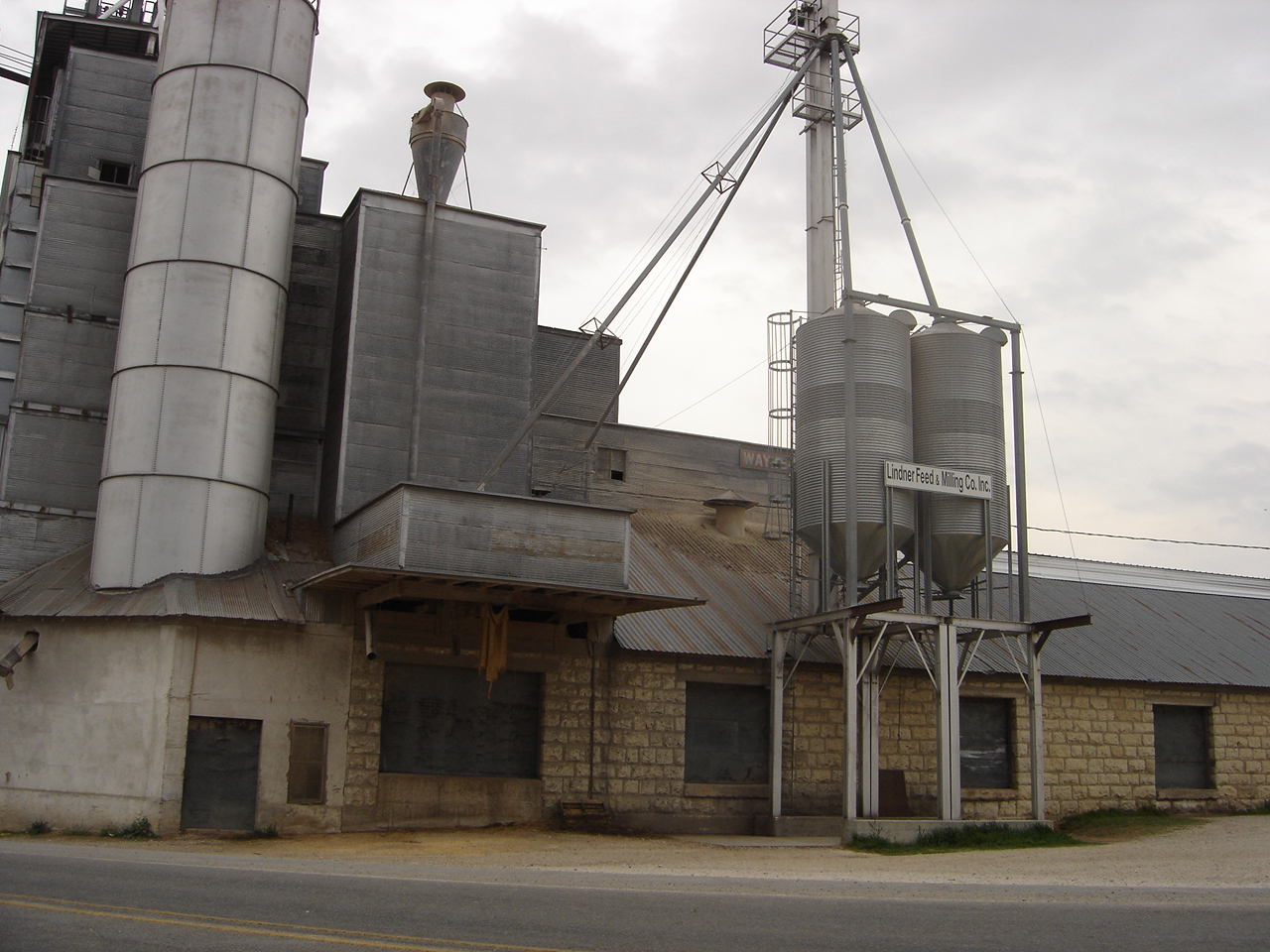
The time from 1940 to 1960 saw even more growth. Some of Comfort’s men went off to
fight in World War II and Korean wars during that time. The Kendall County Water Control &
Improvement District was established. A six-man football team was also established at the
High School. Catholic and Baptist Churches sprang up during this time. In 1951, the
Lone
Star Gas Company installed a natural gas system for the town. A second post office was
constructed. Comfort had become more modernized. In 1954, Comfort celebrated its
100 year anniversary in the traditional style. of dancing, beer, and a parade.
It also held a pageant on the banks of the Cypress Creek. In what seemed to
complete the modernization age of Comfort, the telephone rotary dial system was
brought to Comfort in 1959. From 1960 to 1975, Comfort had taken the shape that appears to visitors today.
Even though much of the growth that marked the first half of the century had come to a
halt, Comfort still had some growing to finish. In 1965, the Community Hospital was
dedicated, and Interstate Highway 10 had snaked its way through the Texas Hill
Country to Comfort. Much like in previous wars, Comfort had representatives in the
Vietnam War as well.
(*The Comfort News)
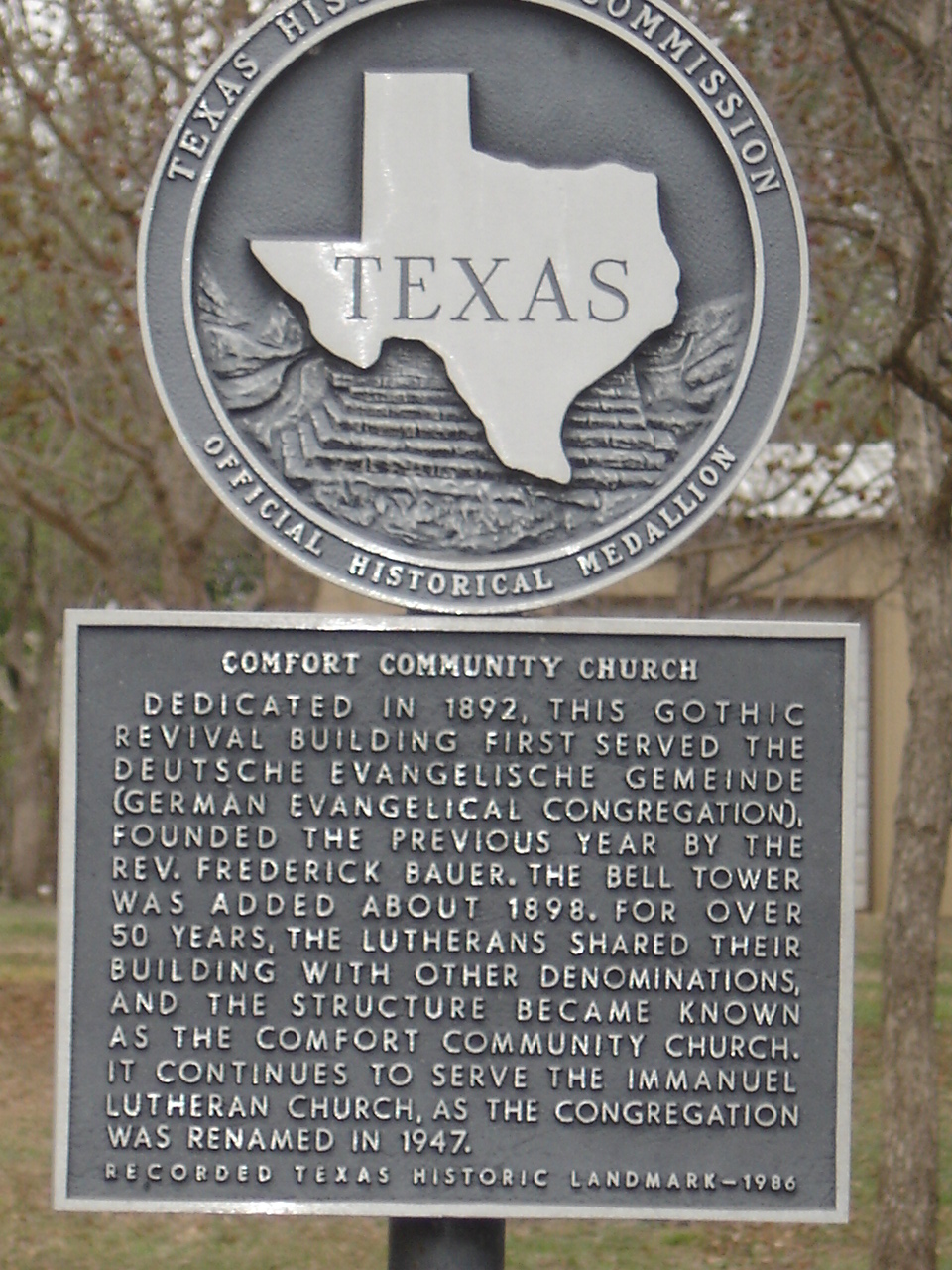
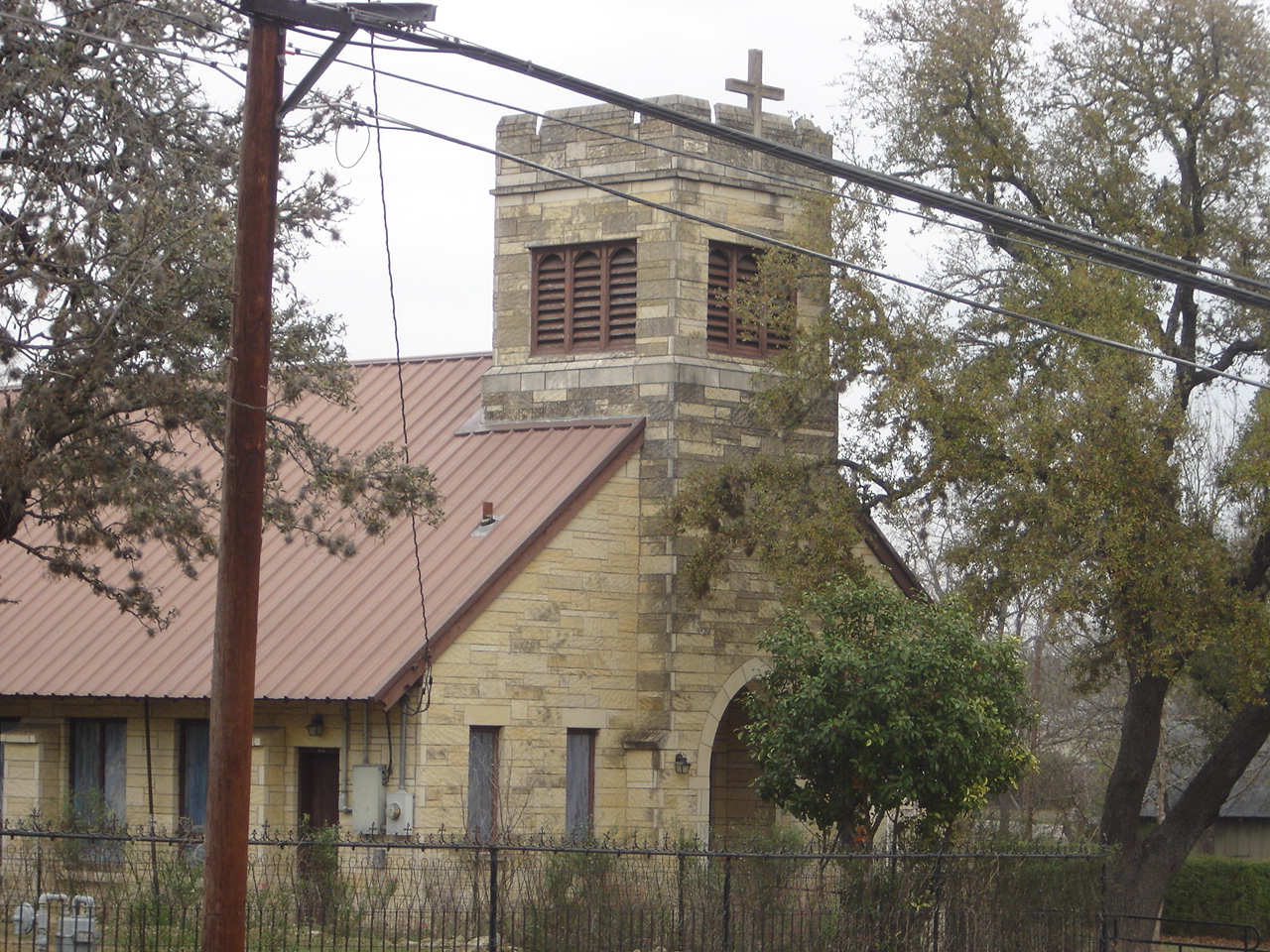
Natural Disaster and Tragedy
From 1976 to 1987, much of Comfort's historical fabric was entangled with natural disasters.
In 1976, as the United States was celebrating its Bi-Centennial, a series of finger tornadoes
wreaked havoc on the town of Comfort. Some older structures were destroyed, and many large
trees were downed. But the tornadoes of 1976 would turn out to seem minor compared to what
would happen in 1978. In August of that year, 40+ inches of rainfall in the area would cause
the Cypress Creek and Guadalupe River to overflow their banks, and devastate the town.
With little or no warning the Cypress Creek overflowed and swallowed most of Comfort.
Some of the most historic areas of Comfort were under 9-12 feet of water.
The Guadalupe River reached it 100 year flood stage. Countless homes were completely
wiped off the landscape; dozens of people were killed in surrounding areas.
The August 10 headline of the Kerrville Mountain Sun newspaper read,
“Worst Flood in
Texas History.” In what would become known as the measuring stick for all future floods
in the area, Comfort suffered greatly.
Life went on in
Comfort peacefully until the year of 1987. That year,
the Guadalupe River would once again create and unforgettable day in Comfort’s history.
On the morning of July 17, heavy rainfall further up the river sent flash flood surges
down towards Comfort. A group of young campers who had spent the week at the
Pot O’ Gold youth camp in Comfort were trying to make their way out of the area when a
massive surge of flood waters swept one bus, and a van full of children into the raging river.
Even though the children had managed to escape the vehicles before they were
covered with floodwaters, the kids were now clinging onto trees, surrounded by
deep raging water. A massive rescue operation ensued. For the next several
hours, National Guard helicopters, and even a news chopper, heroically went
about plucking the children from the trees to safety. Despite their
efforts, 10 of the children lost their lives. One boy was never found.
(*Comfort Heritage, Our Progress. pages 4,5 & 6)
(*The Comfort News)
A memorial now sits at the location where 43 children
were swept into the Guadalupe River in July of 1987.
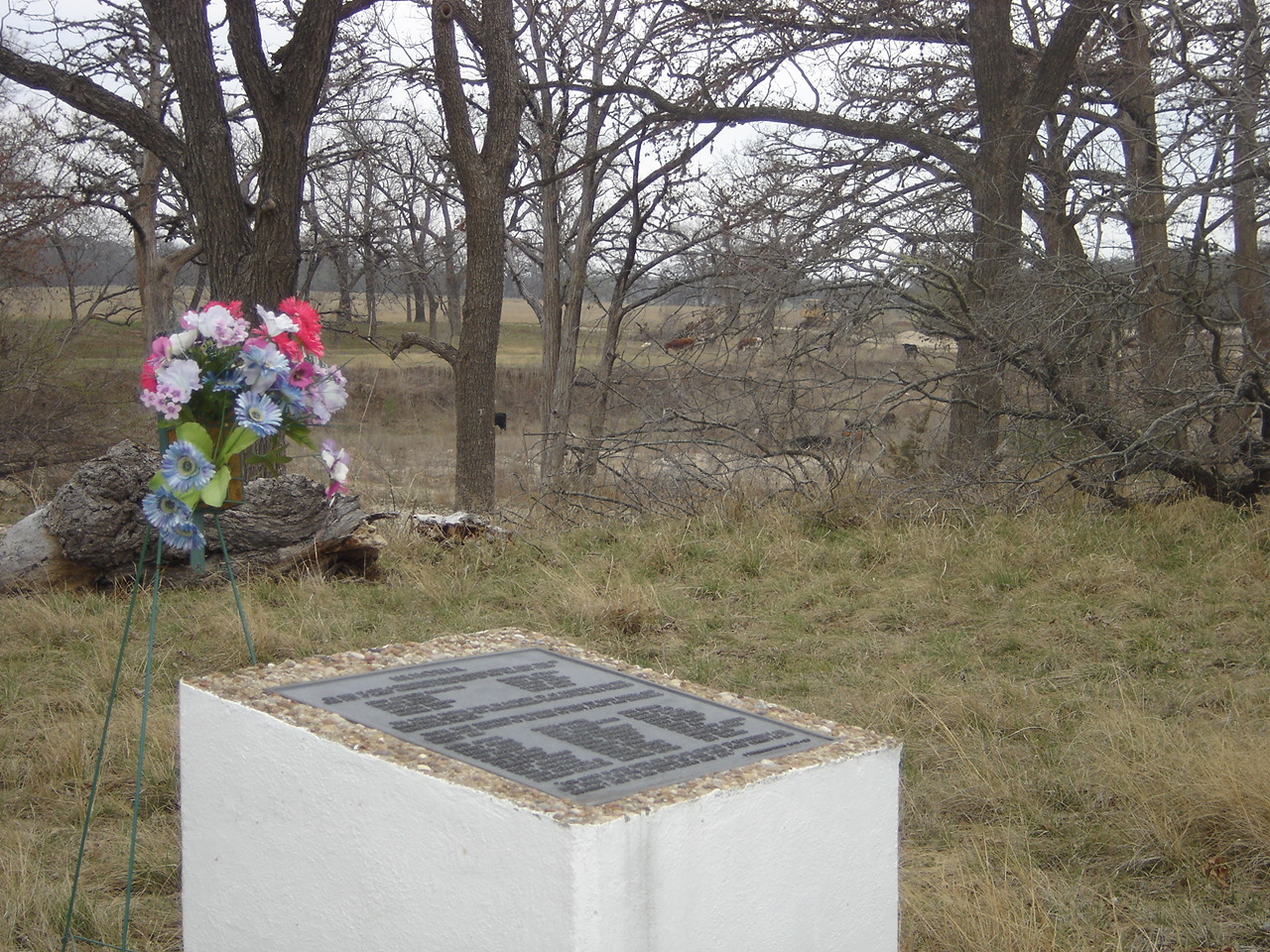
Today, Comfort is still a unique Texas town with lively spirit.
Every year the town celebrates the 4th of July with a parade, brisket dinner,
and a dance later that evening. People flock from hundreds of miles away to
celebrate with old family and friends. At Christmas time, an evening lighted parade
snakes its way through the historic downtown area in celebration of the upcoming holiday.
The Guadalupe River continues to be a celebrated part of the area. Kayakers, and fisherman often make their way to the area to spend a quiet
day on the river. Day trippers who come to the town are often surprised at
the many shops, restaurants, and attractions the town has to offer.
The town now even has a local winery.
The pride in the town’s history is still very evident today.
Since celebrating its 150th Jubilee in 2004, the town shows no signs
of losing the pride that those original “Freethinkers” started with.
From 1852 to present day, Comfort has survived the tests of time while keeping
that original spirit alive. A spirit of self-esteem and pride; pride in freedom;
pride in heritage; pride in taking care of one another. From pioneer life,
to Civil War, to disastrous floods, the people of Comfort have endured. All while
keeping a festive and grateful attitude. There’s no doubt that the people of this town,
past and present, truly found comfort in Texas.
Return to Small Town Research Projects Index








 The turn of the century time was definitely a golden age for Comfort. The first
community church was built in 1892. Social gatherings like parades, dances, picnics and other
festive events became a common occurrence. Men’s clubs, women’s meetings, a men’s chorus, a
literary social club, and several other social groups were the inspiration of an era of great
enthusiasm and community pride. Comfort’s first newspaper, “The Comfort Times” was published,
and the Comfort Park was built. The park is still the central gathering place of many social
celebrations even today. In 1904 Comfort celebrated its 50th anniversary at the park. A
parade was also part of the celebration. Comfort was truly a town beaming with pride and
merriment.
The turn of the century time was definitely a golden age for Comfort. The first
community church was built in 1892. Social gatherings like parades, dances, picnics and other
festive events became a common occurrence. Men’s clubs, women’s meetings, a men’s chorus, a
literary social club, and several other social groups were the inspiration of an era of great
enthusiasm and community pride. Comfort’s first newspaper, “The Comfort Times” was published,
and the Comfort Park was built. The park is still the central gathering place of many social
celebrations even today. In 1904 Comfort celebrated its 50th anniversary at the park. A
parade was also part of the celebration. Comfort was truly a town beaming with pride and
merriment.
 While this “golden age” for Comfort provided peace and public joy, it also brought a
time of great growth. By now, a large population of the town was Hispanic. New homes were
being built at a level never before seen. Local businesses flourished, The very first
automobile was believed to have made its way to Comfort around 1905. The town established
its Chamber of Commerce. The first mail route to Comfort was established in 1908; the
Comfort Volunteer Fire Department was formed in 1912.
While this “golden age” for Comfort provided peace and public joy, it also brought a
time of great growth. By now, a large population of the town was Hispanic. New homes were
being built at a level never before seen. Local businesses flourished, The very first
automobile was believed to have made its way to Comfort around 1905. The town established
its Chamber of Commerce. The first mail route to Comfort was established in 1908; the
Comfort Volunteer Fire Department was formed in 1912.







